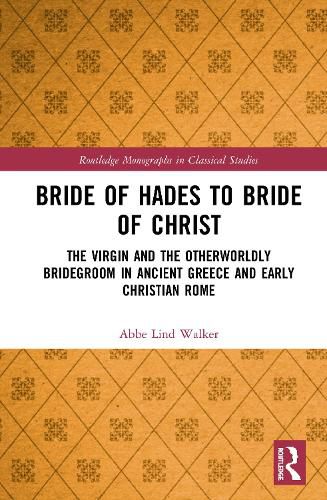Readings Newsletter
Become a Readings Member to make your shopping experience even easier.
Sign in or sign up for free!
You’re not far away from qualifying for FREE standard shipping within Australia
You’ve qualified for FREE standard shipping within Australia
The cart is loading…






This volume argues that ancient Greek girls and early Christian virgins and their families made use of rhetorically similar traditions of marriage to an otherworldly bridegroom in order to handle the problem of a girl’s denied or disrupted transition into adulthood.
In both ancient Greece and early Christian Rome, the standard female transition into adulthood was marked by marriage, sex, and childbirth. When problems arose just before or during this transition, the transitional girl’s status within society became insecure. Walker presents a case for how and why the dead Greek virgin girl, depicted in Archaic through Hellenistic sources, in both texts and inscriptions, as a bride of Hades, and the life-long female Christian virgin or celibate ascetic, dubbed the bride of Christ around the third century CE, provide a fruitful point of comparison as particular examples of strategies used to neutralize the tension of disrupted female transition into adulthood.
Bride of Hades to Bride of Christ offers a fascinating comparative study that will be of interest to anyone working on virginity and womanhood in the ancient world.
$9.00 standard shipping within Australia
FREE standard shipping within Australia for orders over $100.00
Express & International shipping calculated at checkout
This volume argues that ancient Greek girls and early Christian virgins and their families made use of rhetorically similar traditions of marriage to an otherworldly bridegroom in order to handle the problem of a girl’s denied or disrupted transition into adulthood.
In both ancient Greece and early Christian Rome, the standard female transition into adulthood was marked by marriage, sex, and childbirth. When problems arose just before or during this transition, the transitional girl’s status within society became insecure. Walker presents a case for how and why the dead Greek virgin girl, depicted in Archaic through Hellenistic sources, in both texts and inscriptions, as a bride of Hades, and the life-long female Christian virgin or celibate ascetic, dubbed the bride of Christ around the third century CE, provide a fruitful point of comparison as particular examples of strategies used to neutralize the tension of disrupted female transition into adulthood.
Bride of Hades to Bride of Christ offers a fascinating comparative study that will be of interest to anyone working on virginity and womanhood in the ancient world.